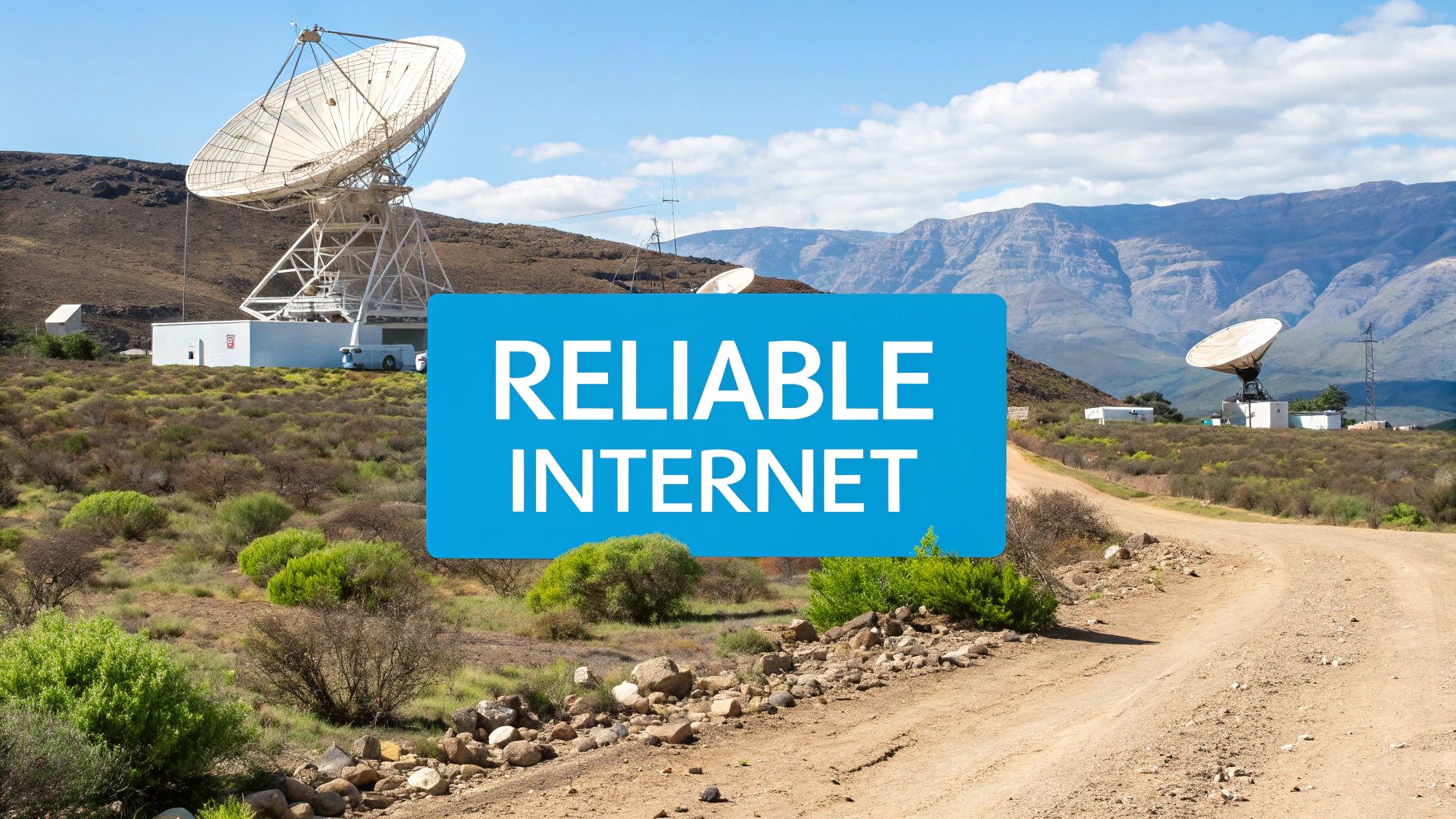

· Por James
Reliable Internet in Remote Locations: Innovative Solutions
The Reality of Internet Access Beyond Urban Boundaries
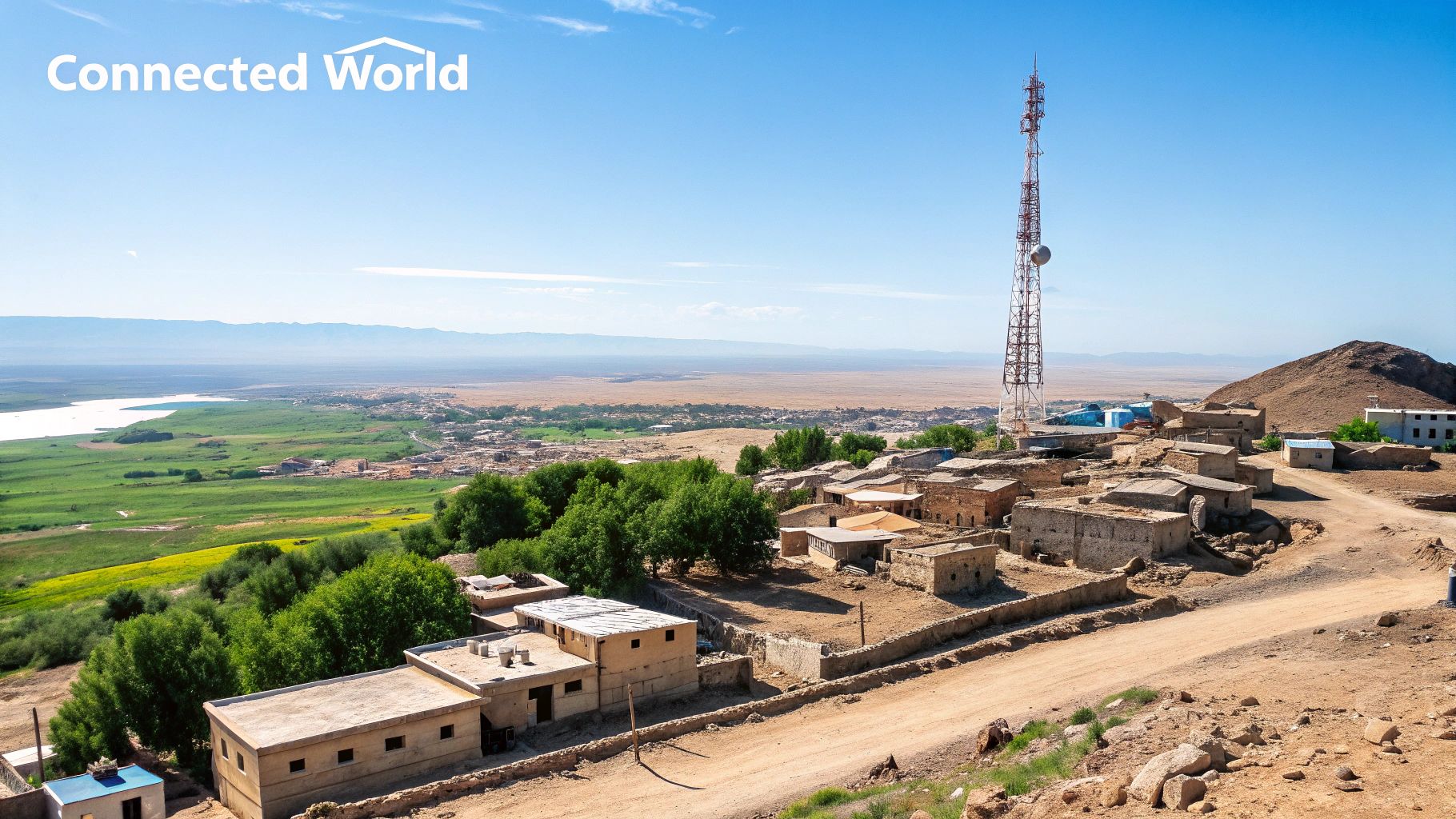
The digital age promises global connectivity. However, the reality for those outside major cities is often very different. While urban areas enjoy fast, reliable internet, many rural communities face slow speeds, limited access, and unreliable connections. This digital divide creates significant disadvantages.
This disparity isn't just inconvenient. It impacts access to crucial services. These include education, healthcare, and economic opportunities. These services are often delivered online, making reliable internet access a necessity.
The Challenges of Rural Connectivity
Several factors contribute to the difficulties of bringing internet service to remote areas. Geographic barriers, such as mountains and forests, pose a significant challenge. Vast distances also complicate matters. These obstacles make deploying traditional infrastructure, like fiber optic cables, expensive and difficult.
For instance, laying cable across miles of challenging terrain is far more costly than in a densely populated city. Additionally, lower population density makes rural areas less appealing to internet service providers (ISPs). It's simply not as profitable to invest in infrastructure upgrades when fewer customers are available.
The State of Internet Access in Remote Areas
Despite the hurdles, some progress has been made in extending internet access to remote regions. Innovative initiatives using satellite technology, fixed wireless, and mobile networks are connecting previously underserved communities. However, growth remains uneven, with significant variations between regions.
While there have been improvements, a substantial gap persists in rural internet access. As of 2024, approximately 86 percent of Europeans in rural areas accessed the internet. In the Commonwealth of Independent States, the figure was slightly lower, around 85 percent. You can find more detailed statistics at: https://www.statista.com/statistics/1228865/internet-access-rate-worldwide-by-region-urban-rural/
Reaching the UN's goal of universal connectivity by 2030 appears increasingly challenging given current growth rates. This is especially true in less developed regions where limited infrastructure and economic constraints hinder internet adoption. North Korea, for example, remains among the least connected countries, highlighting the global disparities in internet access.
Bridging the Digital Divide With SwiftNet
Closing the digital divide requires innovative solutions and focused investments. Companies like SwiftNet are developing technologies specifically designed for the challenges of remote internet access. This includes using advanced satellite technology to deliver high-speed internet to even the most isolated locations.
SwiftNet's commitment to overcoming these obstacles is vital. They are bringing the benefits of reliable internet to communities that need it most. This ensures that everyone, regardless of location, can access the opportunities of a connected world. This is crucial not just for individual well-being but also for promoting economic growth and social equity in these communities.
Mapping the Global Connectivity Landscape
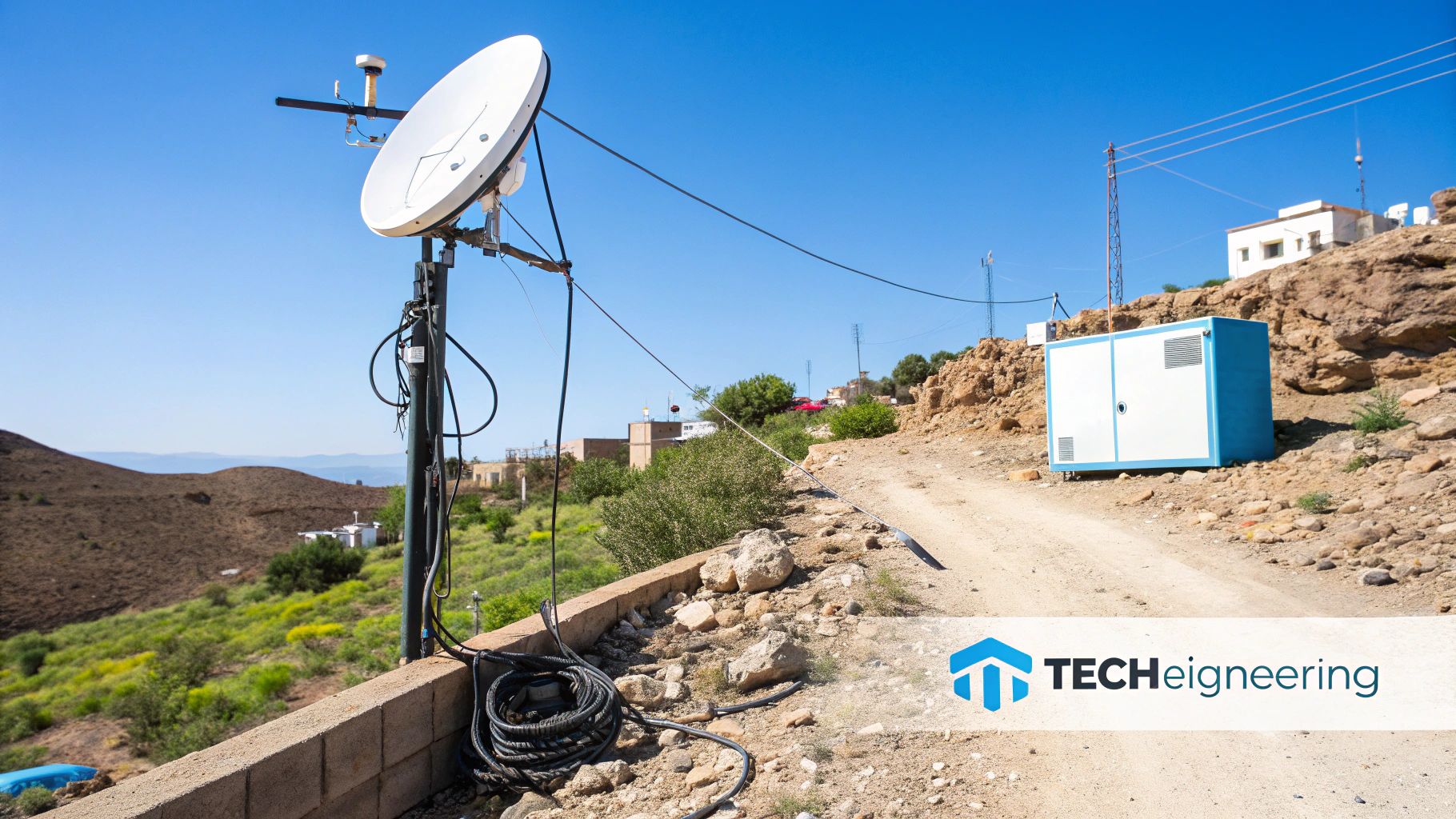
Access to the internet in remote areas varies significantly around the world. While some regions have seen remarkable advancements, others lag behind, illustrating the multifaceted challenge of universal digital inclusion. This uneven distribution stems from geographic, economic, and political influences, creating unique connectivity obstacles for each area.
Regional Disparities in Internet Access
Geography plays a crucial role in internet access for remote locations. Mountainous regions, expansive deserts, and isolated islands pose substantial hurdles for deploying traditional infrastructure. This inherently creates a gap in access between easily reached urban centers and more remote rural communities. This disparity isn't simply inconvenient; it directly impacts quality of life, restricting access to vital services like education, healthcare, and economic opportunities.
For instance, the connectivity challenges faced by remote Himalayan communities differ greatly from those in the Australian outback. The unique geographical characteristics of each region demand tailored solutions.
Economic factors also play a vital role. The expense of installing and maintaining internet infrastructure can be prohibitive for underserved areas. Limited financial resources and lower population density often make these remote areas less commercially viable for internet providers, exacerbating the digital divide.
This is where companies like SwiftNet are working to bridge the gap. They offer solutions designed for the particular needs of remote communities, often tackling not only technical hurdles but also issues of affordability and accessibility. For more information, explore SwiftNet's blog resources.
One striking statistic highlights this contrast: Northern Europe enjoys internet penetration rates as high as 97.5 percent thanks to well-developed infrastructure. Conversely, Eastern Africa, despite significant progress, has historically had much lower rates. Find more detailed statistics here. Notably, between 2015 and 2022, internet users in Africa more than doubled, reaching 570 million. Even within Africa, wide variations exist, with Morocco reaching a 91 percent penetration rate.
Successful Strategies for Remote Connectivity
Despite these obstacles, some countries have effectively bridged the connectivity gap in remote locations. Through innovative solutions and strategic investments, they've shown that overcoming geographical and economic challenges is achievable. This often involves utilizing a mix of technologies, such as satellite internet, fixed wireless, and mobile networks, customized for each region's unique requirements.
These efforts frequently involve establishing public-private partnerships. These partnerships share the costs and expertise, allowing expansion of internet infrastructure into underserved areas. Another crucial factor is empowering local communities to operate and maintain the infrastructure, ensuring long-term sustainability. This localized strategy not only generates employment but also fosters a sense of ownership, leading to more effective use of the internet for education, healthcare, and economic growth.
Connecting the Unconnected: Technologies Bridging the Digital Divide
Expanding digital access is more than just increasing download speeds. It's about fundamentally changing how remote communities connect with essential services and participate in the global economy. This exploration focuses on the technologies making this possible, highlighting their practical uses and real-world impact.
Satellite Internet: Reaching Beyond Terrestrial Limits
Satellite internet has long been a solution for remote areas beyond the reach of cable and fiber. Technological advancements, however, are improving both performance and affordability. Low Earth Orbit (LEO) satellite networks, like Starlink, offer significantly lower latency and higher speeds than traditional geostationary satellites. This makes them a significant advancement for internet access in remote areas.
SwiftNet offers a compelling example of this progress, bringing high-speed internet to previously unconnected communities. Their approach focuses on building a comprehensive connectivity ecosystem, addressing power challenges, providing local support, and ensuring long-term system maintenance.
Fixed Wireless: Broadband Without Wires
Fixed wireless technology is another key player in bridging the digital divide. By using radio waves to transmit data, it eliminates the need for extensive physical cabling. This makes it particularly useful in areas where traditional infrastructure is costly or impossible to deploy.
This technology continues to evolve, with modern systems providing increased speed and reliability, particularly in less populated areas. Terrain and weather can impact performance, making thorough site planning essential. A well-placed fixed wireless tower can connect an entire remote village without running cables to each home, reducing both deployment time and cost.
Mobile Networks: Expanding Cellular Coverage
The growth of mobile networks, especially with the arrival of 5G, provides another pathway to internet access in remote areas. Primarily used for mobile devices, these networks can also serve as the main internet connection for homes and businesses. The effectiveness of this approach depends heavily on geographic location and the mobile network infrastructure's stability. Some projects flourish, while others face challenges due to signal strength and coverage limitations.
Comparing Remote Internet Technologies
Selecting the right technology hinges on a location's unique needs and characteristics. The table below provides a comparison of common solutions, highlighting their strengths and weaknesses.
To understand the nuances of each technology, let's examine a comparison table:
Comparison of Remote Internet Technologies This table compares different technologies used to provide internet in remote locations based on key factors like speed, reliability, cost, and geographic suitability.
| Technology | Average Speed | Installation Cost | Maintenance Requirements | Best Geographic Application | Weather Resistance |
|---|---|---|---|---|---|
| Satellite Internet | Varies, improving with LEO | Moderate to High | Low | Very remote areas, limited terrestrial infrastructure | Affected by heavy rain/snow |
| Fixed Wireless | Moderate to High | Moderate | Moderate | Rural areas with line-of-sight to a base station | Affected by heavy rain/snow |
| Mobile Networks | Varies greatly, increasing with 5G | Low | Low | Areas with existing cell tower infrastructure | Relatively resistant |
This table illustrates the trade-offs inherent in each technology. Satellite internet excels in coverage but can be affected by weather. Fixed wireless offers a good balance but requires line-of-sight. Mobile networks are convenient but depend on existing infrastructure.
By strategically combining and adapting these technologies, we can accelerate the process of bringing reliable internet access to remote communities globally. This progress represents more than just technological advancement. It's a critical step towards greater equity, opportunity, and global inclusion.
Breaking Through Remote Connectivity Barriers
Connecting remote locations presents unique challenges that go beyond mere distance and terrain. Power limitations, the logistics of maintaining equipment in isolated areas, and even securing community acceptance can be significant hurdles. These obstacles have historically kept communities offline, limiting access to essential services. However, innovative approaches employing community partnerships, sustainable energy, and adaptable technologies are demonstrating that these barriers can be overcome.
Powering Connectivity: Sustainable Solutions for Remote Areas
One of the most substantial obstacles to internet access in remote areas is reliable power. Many locations lack access to a consistent electrical grid, rendering traditional internet infrastructure impractical. However, innovative solutions such as solar power and wind energy are offering sustainable alternatives.
Some communities, for example, have successfully deployed solar-powered microgrids to power their internet infrastructure. This reduces reliance on unstable or non-existent grid connections. This localized approach also allows for community-based control and maintenance, ensuring continued internet availability, even during power outages.
SwiftNet's focus on a comprehensive connectivity ecosystem distinguishes it from competitors who may simply deploy hardware. SwiftNet prioritizes implementing sustainable power solutions tailored to the specific needs of each community. This ensures the long-term, reliable operation of the internet infrastructure, a critical factor for its success.
Maintaining Connections: Overcoming Logistical Challenges
Maintaining internet infrastructure in remote locations presents complex logistical hurdles. Transporting equipment and personnel to isolated sites can be both difficult and costly. However, innovative solutions, like training local community members in basic maintenance, are proving highly effective.
This community-based approach fosters local ownership and significantly reduces response times to technical problems. SwiftNet, for instance, invests in training local technicians, ensuring quick issue resolution while also contributing to sustainable local employment opportunities.
Choosing the right technology is also crucial. SwiftNet carefully evaluates the specific environmental and logistical challenges of each region to determine the best technology for long-term success. This might involve selecting robust, weather-resistant equipment designed for minimal maintenance in harsh environments.
Adapting to the Environment: Tailored Solutions for Diverse Terrains
The requirements for internet connectivity can vary drastically, from mountainous regions and desert climates to small island territories. SwiftNet analyzes these diverse environments to create site-specific solutions. This adaptability allows them to overcome challenges other providers might not be equipped to handle, ensuring a strong, consistent connection irrespective of location.
For example, SwiftNet might select different antenna types or adjust transmission power levels based on the specific terrain and climate conditions, optimizing performance and reliability in each unique setting.
The overall trend of internet adoption reveals both impressive growth and persistent challenges in reaching remote areas. Globally, the number of internet users has nearly doubled since 2014, with over 5.5 billion people online as of early 2023. However, while some regions boast high internet penetration, 12 countries still report internet adoption below 25 percent as of 2024. This highlights the digital divide and emphasizes the importance of infrastructure development. Find more detailed statistics here. SwiftNet’s commitment to tailored solutions plays a key role in bridging this gap and extending reliable internet access to all remote locations.
Transforming Communities Through Digital Connection
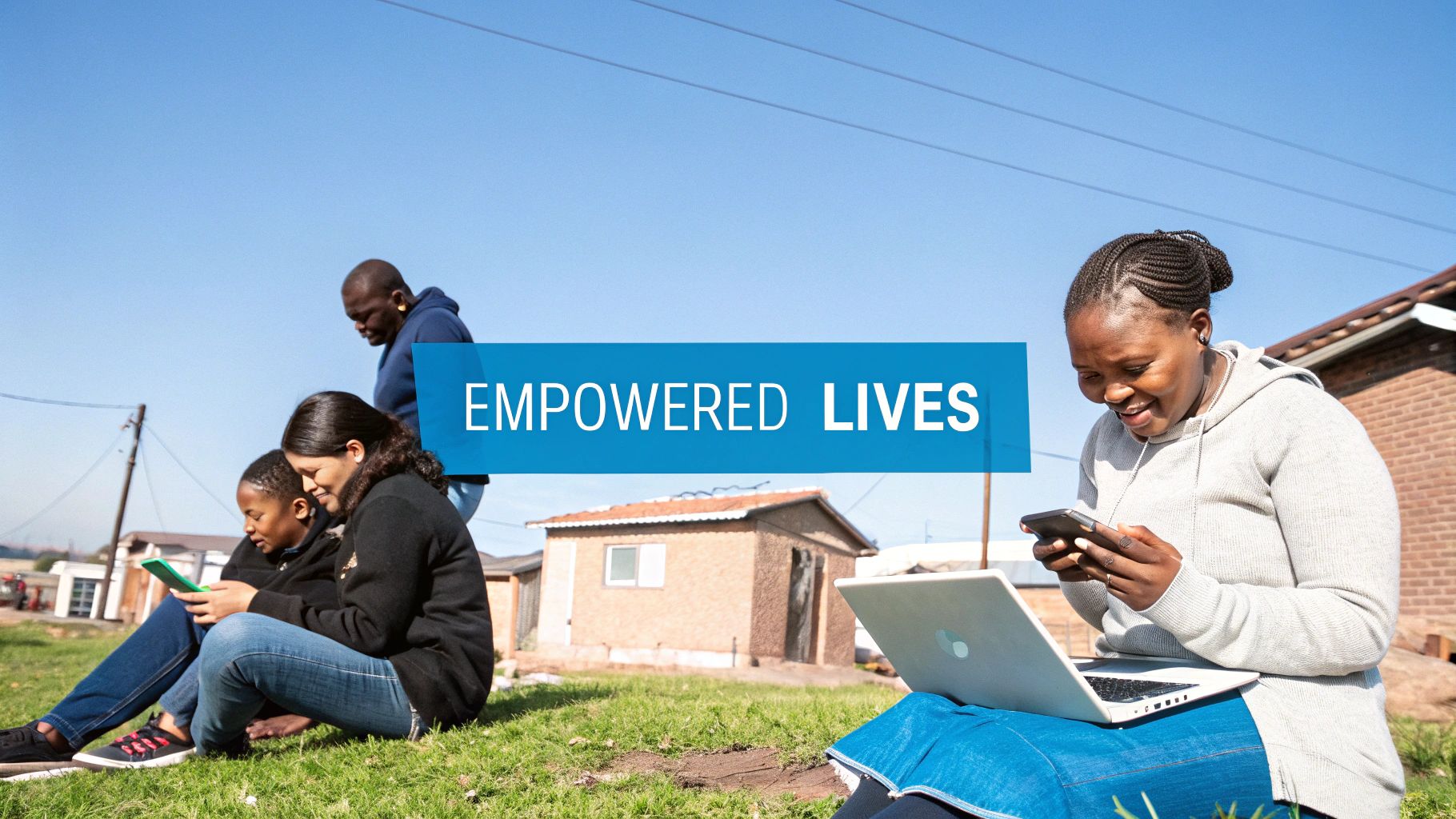
Internet access in remote locations has become much more than simply a technological advancement. It's a fundamental driver of social and economic change. Reliable connectivity empowers isolated communities, creating opportunities and enhancing the quality of life for residents. This digital bridge is reshaping essential aspects of life, from supporting local economies to improving healthcare access and even playing a vital role in cultural preservation.
Economic Empowerment Through Connectivity
The internet offers a powerful engine for economic growth in remote locations. It empowers residents to participate in the global economy through opportunities like remote work, e-commerce, and access to broader markets. Imagine artisans in a remote village selling handcrafted goods online to customers worldwide, effectively bypassing traditional geographical limitations. This not only expands their customer base but also increases their potential income.
Access to online job platforms opens doors to remote work opportunities, allowing individuals to earn a living while remaining in their communities. This is particularly impactful in areas with limited local employment options. The influx of income can revitalize local economies and contribute to greater financial stability for families. This newfound economic landscape cultivates individual empowerment and fosters sustainable growth in remote communities.
Education and Healthcare: Access and Advancement
Reliable internet access is also revolutionizing education and healthcare in remote areas. Distance learning programs bring quality education to students who previously lacked access, significantly improving educational outcomes and creating pathways to higher education.
Telemedicine is transforming healthcare delivery by connecting patients in underserved regions with specialists and medical resources they couldn't access otherwise. This is particularly beneficial in areas with limited local healthcare facilities or for individuals with mobility challenges. This improved access leads to better health outcomes and a higher quality of life.
Let's take a closer look at some of the specific benefits internet access provides to remote communities in the table below.
Benefits of Internet Access in Remote Communities
This table presents key statistical findings on how internet access has improved various aspects of life in remote communities across different regions.
| Benefit Category | Measured Impact | Notable Examples | Required Infrastructure |
|---|---|---|---|
| Economic Growth | Increased income for 35% of artisans selling goods online | Remote villages in South America utilizing e-commerce platforms | Broadband internet access, online payment systems |
| Education | 20% improvement in student test scores in remote areas with access to online learning | Online educational programs implemented in remote schools in Africa | Reliable internet access, digital learning devices |
| Healthcare | 15% reduction in hospital readmission rates due to telemedicine consultations | Telemedicine programs connecting remote communities in Canada with specialists | Broadband internet access, video conferencing equipment |
| Cultural Preservation | Increased documentation and sharing of indigenous languages and traditions | Online archives and cultural centers established by remote communities in Australia | Internet access, digital recording and archiving tools |
As the table illustrates, internet access has had a demonstrably positive impact on various facets of life in remote communities, fostering economic growth, improving education and healthcare, and enabling cultural preservation.
Cultural Preservation and Community Revitalization
Beyond the practical benefits, internet access in remote locations fosters cultural preservation and strengthens community bonds. It allows communities to document and share their unique traditions, languages, and stories with the world, preserving them for future generations. Learn more in this article about SwiftNet and Community Revitalization.
Furthermore, staying connected with family and friends who may have moved away mitigates the effects of population decline often seen in remote areas. This strengthened sense of community can revitalize these areas and encourage younger generations to remain connected to their roots. The internet becomes a powerful tool for maintaining cultural identity and fostering a thriving community spirit. This ultimately contributes to greater social well-being and ensures the sustainability of these valuable communities.
The Next Frontier of Internet in Remote Locations
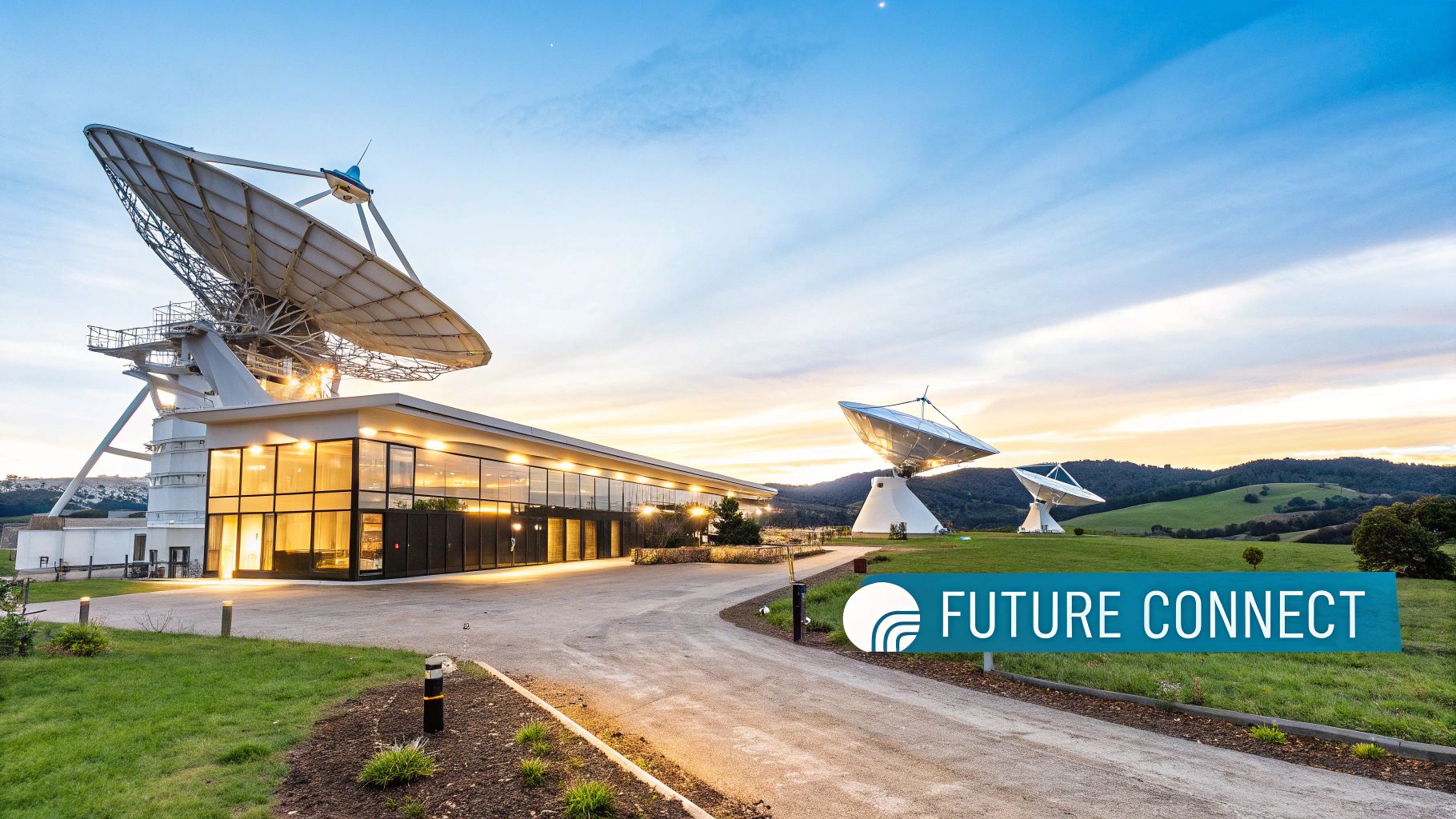
Connecting remote communities to the internet is a constantly evolving challenge. New technologies and approaches offer the potential to dramatically improve speed, reliability, and access. These advancements mean more than just faster downloads; they represent opportunities for individual empowerment and community transformation.
Next-Generation Satellite Constellations: Expanding the Reach of Connectivity
Satellite technology has long been a key player in bringing internet access to remote areas. Traditional geostationary satellites, however, face limitations in speed and latency. Next-generation satellite constellations aim to overcome these challenges.
Companies like SwiftNet are deploying innovative orbital strategies and ground infrastructure to provide lower latency, increased bandwidth, and wider coverage. This technology promises to bring high-speed internet to even the most isolated communities. SwiftNet's advanced satellite technology offers a significant advantage over competitors reliant on older systems or limited ground infrastructure.
AI-Powered Network Optimization: Enhancing Performance in Challenging Environments
Artificial intelligence (AI) is increasingly important for optimizing network performance, particularly in the challenging environments often found in remote areas. AI algorithms can dynamically adjust network parameters in real-time.
Factors like weather patterns and user demand are considered, allowing internet connections to remain stable and efficient even in fluctuating conditions. This consistent connectivity is crucial for remote locations needing reliable access to essential services like education and healthcare.
Breakthrough Power Solutions: Ensuring Sustainable Connectivity
A major requirement for internet infrastructure in remote areas is reliable power. Many of these locations lack access to a stable power grid, posing a challenge for traditional solutions. Sustainable power solutions, such as solar and wind power, are proving to be a viable alternative.
Solar-powered microgrids, for example, enable remote communities to power their internet infrastructure independently. SwiftNet prioritizes sustainable energy, a key differentiator and critical component for long-term success, unlike competitors who may not place the same emphasis on this vital aspect.
Separating Hype From Reality: Identifying Technologies With True Potential
The field of remote internet access is filled with both promising innovations and overstated solutions. Distinguishing between technologies that truly deliver and those that fall short is paramount. SwiftNet focuses on proven technologies with measurable benefits for remote communities, using meticulous analysis and real-world testing.
This careful, data-driven evaluation ensures that investments in remote internet infrastructure are both effective and sustainable. This approach aligns with global sustainability initiatives, minimizing environmental impact while maximizing social and economic benefits.
The timeline for implementing these innovations depends on the specific region, environment, and available resources. The rapid pace of technological advancement, however, suggests that widespread high-speed internet access in remote areas is becoming increasingly attainable. This represents not just a technological win, but a significant stride towards a more connected and equitable world.
Ready to explore the future of connectivity? Learn more about SwiftNet Wifi and our solutions for remote internet access at https://swiftnetwifi.com.

